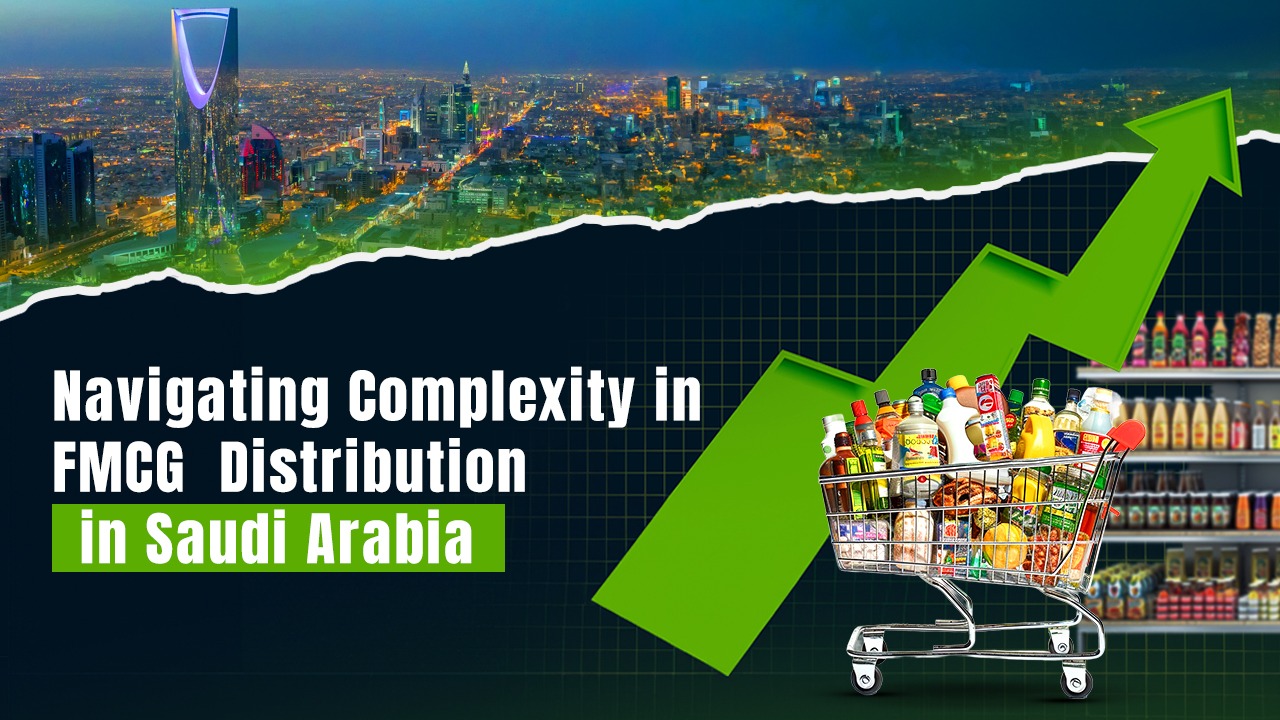The Fast-Moving Consumer Goods (FMCG) sector is one of the most dynamic and competitive markets globally. In Saudi Arabia, where a large, diverse, and youthful population drives demand, FMCG distribution presents unique challenges and opportunities. The Kingdom’s economic growth, driven by Vision 2030, along with its strategic location, offers both local and international brands significant potential for expansion. However, the complexity of FMCG distribution in Saudi Arabia requires a deep understanding of the market, logistics, and regulatory frameworks. This blog explores key aspects of navigating the FMCG distribution landscape in the country.
- Understanding the Saudi Market
Saudi Arabia has a population of over 35 million, with the majority under 35 years old. This demographic drives high consumption of FMCG products, particularly in food and beverages, personal care, and household items. The rise of e-commerce, growing urbanization, and the increased purchasing power of consumers are reshaping how products reach end users.
However, the Saudi market is segmented geographically and culturally, requiring brands to tailor their distribution strategies. The central region, dominated by Riyadh, is vastly different from the coastal cities like Jeddah or the conservative southern regions. Understanding these regional nuances is key to effective market penetration.
- Distribution Network and Infrastructure
Saudi Arabia’s vast landscape and diverse geography present logistical challenges for FMCG companies. Establishing an efficient distribution network is critical to ensure products are available across urban and rural areas. Here are some important considerations:
- Warehousing: Riyadh, Jeddah, and Dammam are major distribution hubs. Companies often rely on third-party logistics (3PL) providers to maintain their inventory and distribute products across these regions. Investing in automated warehousing systems can help improve efficiency and reduce costs.
- Transportation: The Kingdom has invested heavily in infrastructure, including ports, highways, and rail systems. However, navigating the complex supply chain still requires a well-managed fleet of vehicles and a strong understanding of last-mile logistics. The country’s size means that transit times can be longer, which requires careful management of perishable goods.
- Cold Chain Management: For FMCG categories like dairy, frozen foods, and pharmaceuticals, cold chain logistics are crucial. Maintaining the cold chain across long distances in Saudi Arabia’s harsh climate can be a challenge, but failure to do so can result in significant losses.
- Regulatory Compliance
The Saudi Arabian government is focused on improving regulations to facilitate business while ensuring consumer safety and quality standards. For FMCG companies, compliance with local regulations is non-negotiable. The Saudi Food and Drug Authority (SFDA) oversees the safety and standards of food products, while the Saudi Standards, Metrology and Quality Organization (SASO) is responsible for other consumer goods.
Key regulatory considerations include:
- Labeling and Packaging: All FMCG products must comply with Saudi labeling laws, which require Arabic text on packaging, clear expiration dates, and detailed ingredient lists.
- Import Duties and Tariffs: Imported goods are subject to customs duties, which vary depending on the product category. Companies must also be aware of any import restrictions and ensure they have the necessary documentation in place to avoid delays at the border.
- Halal Certification: Given the importance of religious adherence in Saudi Arabia, ensuring Halal certification for food and beverage products is critical for market success.
- Retail Channels and E-Commerce
FMCG products in Saudi Arabia are distributed through a variety of retail channels, including hypermarkets, supermarkets, convenience stores, and traditional markets (souks). However, with the rapid growth of digital infrastructure, e-commerce has become a significant player in FMCG distribution.
- E-Commerce Growth: Platforms like Noon and Amazon.sa have gained immense popularity, enabling consumers to shop for FMCG products online. For brands, this presents an opportunity to diversify distribution channels and reach consumers directly.
- Omnichannel Strategy: To succeed in Saudi Arabia’s FMCG market, companies need to adopt an omnichannel approach that integrates physical and digital retail channels. This not only improves product accessibility but also enhances brand visibility and consumer loyalty.
- Partnerships and Local Distributors
Building strong relationships with local distributors is crucial for success in Saudi Arabia. These partnerships can help FMCG brands navigate the complexities of local regulations, cultural differences, and logistical challenges. Established distributors often have deep knowledge of the market and can provide insights into consumer behavior, competitor strategies, and emerging trends.
When selecting local distributors, it’s essential to consider their network, reputation, and ability to scale with your business. Aligning with a distributor that shares your long-term vision can ensure smoother market entry and growth.
- Cultural Sensitivity and Consumer Preferences
Saudi Arabia’s unique culture heavily influences consumer preferences. Brands need to be sensitive to religious and cultural practices, especially in food and beverage categories. For example, Ramadan, the holy month of fasting, significantly impacts FMCG sales, as consumer spending spikes before and after the fasting period.
Incorporating local tastes and preferences into product offerings can increase acceptance and brand loyalty. For example, some international brands have introduced Saudi-specific flavors or product lines tailored to local preferences.
Conclusion
The FMCG distribution landscape in Saudi Arabia is complex but full of opportunity. Companies looking to succeed in this market need to navigate logistical challenges, regulatory frameworks, and cultural nuances. By investing in efficient distribution networks, building strong partnerships with local distributors, and adopting an omnichannel strategy, FMCG brands can unlock the full potential of Saudi Arabia’s growing consumer market. As the Kingdom continues to modernize under Vision 2030, those who can adapt and innovate will be best positioned for long-term success.
This guide aims to provide a comprehensive overview for businesses looking to enter or expand their presence in Saudi Arabia’s FMCG sector. Balancing market understanding with the right distribution strategies will be the key to achieving sustainable growth.




